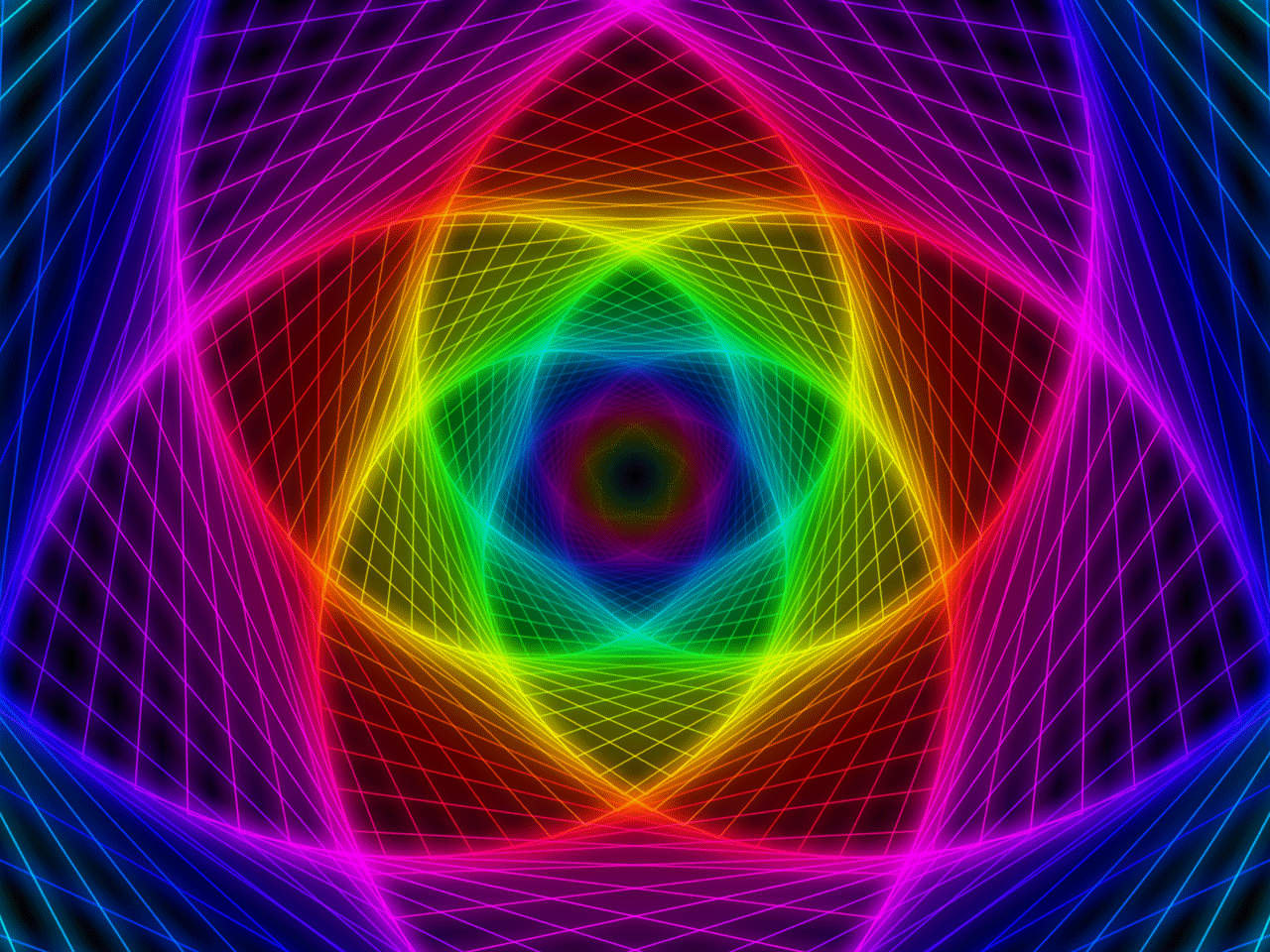Fractal patterns have been found in the paintings of American artist Jackson Pollock. While Pollock’s paintings appear to be composed of chaotic dripping and splattering, computer analysis has found fractal patterns in his work.
Decalcomania, a technique used by artists such as Max Ernst, can produce fractal-like patterns. It involves pressing paint between two surfaces and pulling them apart.
Cyberneticist Ron Eglash has suggested that fractal geometry and mathematics are prevalent in African art, games, divination, trade, and architecture. Circular houses appear in circles of circles, rectangular houses in rectangles of rectangles, and so on. Such scaling patterns can also be found in African textiles, sculpture, and even cornrow hairstyles.
In a 1996 interview with Michael Silverblatt, David Foster Wallace admitted that the structure of the first draft of Infinite Jest he gave to his editor Michael Pietsch was inspired by fractals, specifically the Sierpinski triangle (aka Sierpinski gasket) but that the edited novel is “more like a lopsided Sierpinsky Gasket”.
The history of fractals traces a path from chiefly theoretical studies to modern applications in computer graphics, with several notable people contributing canonical fractal forms along the way. According to Pickover, the mathematics behind fractals began to take shape in the 17th century when the mathematician and philosopher Gottfried Leibniz pondered recursive self-similarity (although he made the mistake of thinking that only the straight line was self-similar in this sense).In his writings, Leibniz used the term “fractional exponents”, but lamented that “Geometry” did not yet know of them :405 Indeed, according to various historical accounts, after that point few mathematicians tackled the issues and the work of those who did remained obscured largely because of resistance to such unfamiliar emerging concepts, which were sometimes referred to as mathematical “monsters”.Thus, it was not until two centuries had passed that in 1872 Karl Weierstrass presented the first definition of a function with a graph that would today be considered fractal, having the non-intuitive property of being everywhere continuous but nowhere differentiable. Not long after that, in 1883, Georg Cantor, who attended lectures by Weierstrass,published examples of subsets of the real line known as Cantor sets, which had unusual properties and are now recognized as fractals.Also in the last part of that century, Felix Klein and Henri Poincaré introduced a category of fractal that has come to be called “self-inverse” fractals.
- Apple Is Testing Watch-Like Device - June 10, 2015
- Apple Introduces iOS 9, And You’re About To Get More Battery Life - June 9, 2015
- Series.Won: C.R.U.X.X! App Development Drafts - May 30, 2013


























